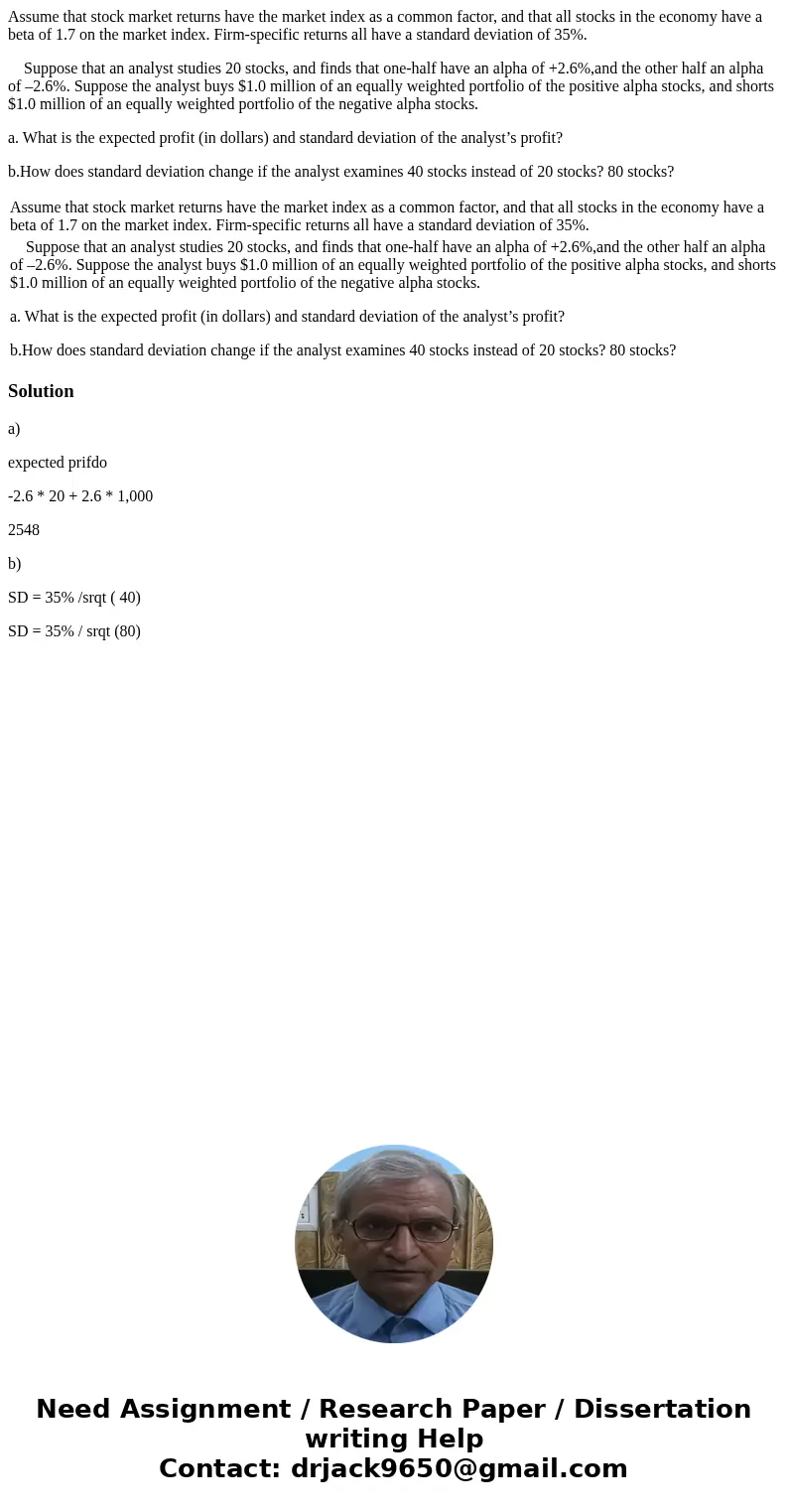Assume that stock market returns have the market index as a
Assume that stock market returns have the market index as a common factor, and that all stocks in the economy have a beta of 1.7 on the market index. Firm-specific returns all have a standard deviation of 35%.
Suppose that an analyst studies 20 stocks, and finds that one-half have an alpha of +2.6%,and the other half an alpha of –2.6%. Suppose the analyst buys $1.0 million of an equally weighted portfolio of the positive alpha stocks, and shorts $1.0 million of an equally weighted portfolio of the negative alpha stocks.
a. What is the expected profit (in dollars) and standard deviation of the analyst’s profit?
b.How does standard deviation change if the analyst examines 40 stocks instead of 20 stocks? 80 stocks?
| Assume that stock market returns have the market index as a common factor, and that all stocks in the economy have a beta of 1.7 on the market index. Firm-specific returns all have a standard deviation of 35%. |
| Suppose that an analyst studies 20 stocks, and finds that one-half have an alpha of +2.6%,and the other half an alpha of –2.6%. Suppose the analyst buys $1.0 million of an equally weighted portfolio of the positive alpha stocks, and shorts $1.0 million of an equally weighted portfolio of the negative alpha stocks. a. What is the expected profit (in dollars) and standard deviation of the analyst’s profit? b.How does standard deviation change if the analyst examines 40 stocks instead of 20 stocks? 80 stocks? |
Solution
a)
expected prifdo
-2.6 * 20 + 2.6 * 1,000
2548
b)
SD = 35% /srqt ( 40)
SD = 35% / srqt (80)

 Homework Sourse
Homework Sourse